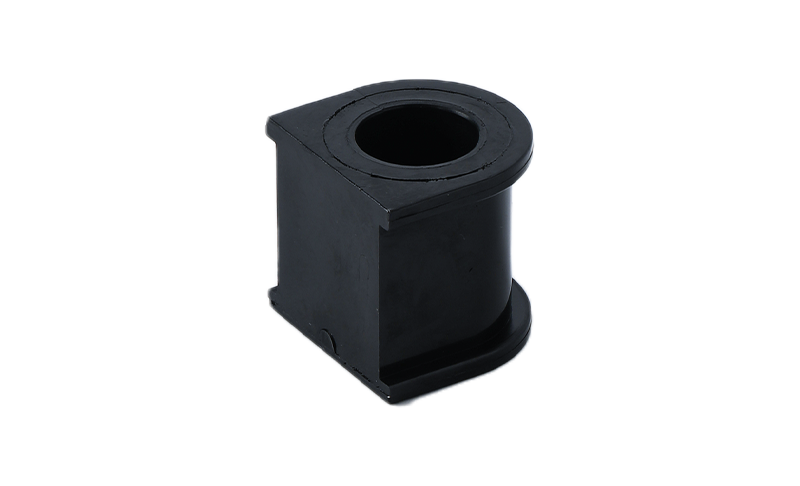Growing Demand and Evolving Use Cases for Automotive Part Suspension Stabilizer Bar Bushing in Modern Vehicles
In today’s rapidly evolving automotive industry, components that enhance ride comfort, handling, and safety are under constant innovation. Among these vital parts, the Automotive Part Suspension Stabilizer Bar Bushing plays a crucial role in vehicle suspension systems. This small yet indispensable component is experiencing growing demand across both passenger and commercial vehicle segments, driven by trends in vehicle stability, lightweight design, and aftermarket customization.
The Automotive Part Suspension Stabilizer Bar Bushing is designed to cushion and support the stabilizer bar, a component that connects opposite wheels together through short lever arms linked by a torsion spring. When a vehicle takes a turn, the stabilizer bar resists body roll by distributing the load evenly across the suspension. The bushing ensures smooth operation of the bar, reducing vibrations, absorbing shocks, and eliminating metal-to-metal contact.
One of the significant usage scenarios for the Automotive Part Suspension Stabilizer Bar Bushing is in enhancing vehicle stability and ride comfort. In both sedans and SUVs, these bushings are strategically positioned at the mounting points of the stabilizer bar to dampen road noise and vibration, contributing to a more comfortable and quieter ride. High-performance and luxury car manufacturers, in particular, are increasingly focusing on improving passenger experience by integrating advanced bushing materials, such as polyurethane and thermoplastic elastomers, which offer greater durability and noise reduction than traditional rubber.
Fleet operators and commercial vehicle manufacturers also rely on the Automotive Part Suspension Stabilizer Bar Bushing to ensure long-term performance and reduced maintenance. Buses and delivery trucks, which frequently navigate uneven terrains and carry varying loads, benefit from stabilizer bar bushings that maintain vehicle balance and minimize chassis sway. These bushings play a pivotal role in prolonging tire life, reducing wear on suspension components, and preventing oversteer or understeer, thereby enhancing safety.
As the automotive aftermarket grows, the replacement of worn-out Automotive Part Suspension Stabilizer Bar Bushing has become a popular maintenance task among DIY enthusiasts and professional mechanics alike. Over time, bushings degrade due to heat, road salts, and constant stress, result in clunking noises, poor handling, and uneven tire wear. Replacing these bushings with upgraded versions allows vehicle owners to restore and even enhance original performance. Many aftermarket suppliers are offering high-durability variants, tailored to specific vehicle models and driving styles.

The electrification of vehicles also influences the development of the Automotive Part Suspension Stabilizer Bar Bushing. Electric vehicles (EVs), known for their heavier battery systems and quieter operations, place new demands on suspension systems. Bushings in EVs must not only support increased weight but also contribute to noise, vibration, and harshness (NVH) reduction to maintain the near-silent cabin environment EV buyers expect. Advanced polymer-based stabilizer bar bushings are now being engineered to meet these challenges, providing EVs with both resilience and acoustic comfort.
Manufacturers are leveraging simulation tools and materials science advancements to design Automotive Part Suspension Stabilizer Bar Bushing components that offer precise stiffness, resistance to environmental degradation, and little deformation. Innovations such as dual-durometer bushings and encapsulated bushing designs provide enhanced longevity and performance consistency across temperature extremes.
Another usage scenario where the Automotive Part Suspension Stabilizer Bar Bushing shines is in motorsport and off-road applications. In these demanding conditions, bushings are often subject to forces and terrain irregularities. Performance enthusiasts replace stock bushings with reinforced aftermarket versions to achieve tighter handling and improved feedback. Off-roaders, for instance, seek bushings that can withstand mud, sand, and water intrusion while maintaining flexibility and shock absorption.
Global markets are also seeing increased production of the Automotive Part Suspension Stabilizer Bar Bushing in regions like Asia-Pacific and Latin America, where automotive production is on the rise. OEMs and Tier-1 suppliers in these markets are focusing on cost-effective yet durable bushing solutions to meet both domestic and export demands.
NEXT:Enhancing Safety and Efficiency in the Trucking Industry with the 7-Wire Hook Light Truck Tire Chain Dobby Tensioner
Related Products
-
 View More
View More
Industrial Flat Nature Tarp EPDM Rubber Strap with Hooks
-
 View More
View More
100% EPDM 9"/10"/15"/21"/31"/41" Rubber Tie Down Tarp Straps with S Hook
-
 View More
View More
7-wire hook light truck tire chain dobby tensioner
-
 View More
View More
Blue multi- arm tighteners for light truck tire chain with 6 wire hook
-
 View More
View More
JB-21 Rubber Foot Pad, Cargo Bar Pad
-
 View More
View More
Plastic/Rubber Bundled Cargo Stepping Board


